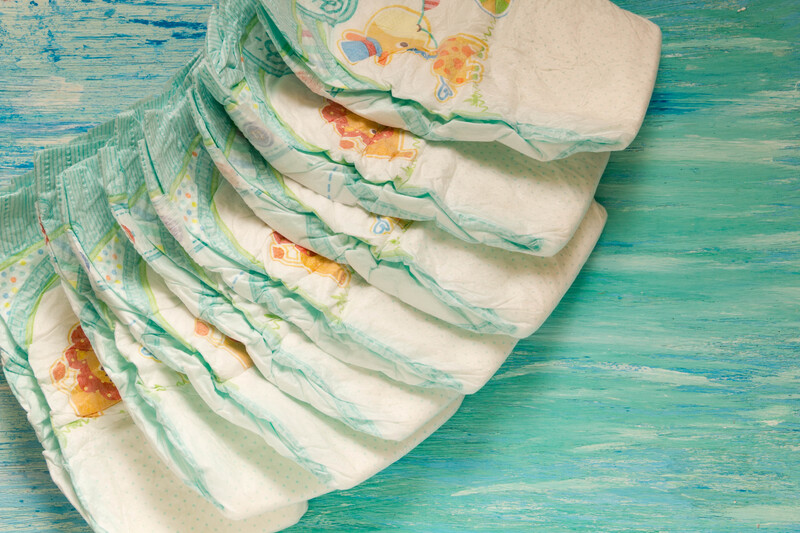Professional Assessment for Effective Hoarder Clean Up and Clutter Removal
Hoarding is a complex mental health condition that often leads to excessive accumulation of items and severe clutter in living spaces. Addressing this issue requires more than just tidying up--it demands a compassionate, individualized, and comprehensive approach. At the core of a successful intervention is a professional assessment, which guides both effective hoarder clean up and systematic clutter removal. Understanding its importance and process can greatly improve outcomes for those affected by hoarding disorder.

Why a Professional Assessment Matters
Before embarking on any hoarder clean up project, it's essential to understand the underlying conditions, specific risks, and unique challenges present in each case. A professional assessment enables experts to create a tailored plan that ensures both safety and effectiveness.
- Safety First: Hidden hazards like mold, pests, structural damage, or biohazardous waste are common in homes affected by hoarding. Assessments help identify these issues before removal begins.
- Customized Clean Up: Every hoarder's situation is unique. Assessments allow for the development of a personalized strategy, accommodating individual needs, mental health concerns, and property requirements.
- Legal Compliance: Certain cases may involve legal implications, especially if children, pets, or rental properties are involved. Professionals ensure compliance with local laws and health codes.
- Resource Optimization: By evaluating the level of clutter and required manpower, professionals can allocate resources efficiently, saving time and costs.
- Emotional Support: Assessment professionals are trained to identify emotional triggers and stressors, which helps in planning a compassionate and supportive intervention.
Understanding Hoarder Clean Up: Key Considerations
Dealing with hoarding isn't just about cleaning; it's about restoring lives. Let's break down the central concepts vital for a successful hoarder clean up and clutter removal project:
- Health and Safety Risks: Clutter can conceal dangerous substances or structural problems. Professional assessments identify these risks and ensure the team uses the right protective gear.
- Mental Health Factors: Hoarding is typically linked to mental health disorders such as OCD, anxiety, or trauma. Professionals collaborate with therapists or social workers to support clients emotionally.
- Scope of Work: An assessment evaluates the severity of clutter--from mild to extreme--to determine if a simple declutter or a full-scale remediation is needed.
- Intervention Plans: The results of a professional assessment inform cleaning methods, disposal options, and how to handle sensitive items.
The Step-By-Step Process of Professional Assessment
A thorough assessment for hoarding clean up usually follows these steps:
-
Initial Consultation
The process starts with a confidential discussion with the individual or family members. This stage helps professionals understand the background, triggers, and expectations related to the cleanup. -
Property Inspection
A team visits the property to examine the condition of each area, documenting the types and degree of clutter, hazards, and accessibility. Photos and notes are taken, always respecting client privacy. -
Risk Assessment
Experts identify biological, chemical, physical, and environmental hazards. Special attention is given to infestations, mold, sharp objects, fire risk, and blocked exits. -
Mental Health Evaluation
Having input from a mental health professional is invaluable. They may conduct interviews or assessments to gauge the emotional impact of clean up on the resident. -
Developing a Clutter Removal Plan
Based on observations, the team creates a strategic plan covering safety procedures, item sorting, cleaning techniques, and emotional support measures. -
Client Briefing
A clear, compassionate explanation of the findings and the proposed steps ensures that the client feels informed, involved, and in control.
Key Elements of a Professional Clutter Removal Plan
The assessment paves the way for an effective hoarder clean up and organized clutter removal. Here's what a thorough plan includes:
- Safety Protocols: Infection control, use of PPE (personal protective equipment), ventilation, and first aid readiness.
- Sorting Methodology: Categorize items based on keep, donate, recycle, or dispose of. Sensitive or valuable items are handled with extra care.
- Resource Allocation: Assigning a cleaning crew, equipment, vehicles, and protective materials depending on property size and content volume.
- Disposal Arrangements: Organizing responsible disposal or recycling, including hazardous waste management if required.
- Emotional and Psychological Support: Continuous guidance for the resident, enlisting the help of counselors or family members as necessary.
- Follow-Up Schedule: Routine check-ins post-cleanup to ensure clutter doesn't reaccumulate and the resident remains supported.
Why Choose Professional Hoarder Cleaning Services?
Attempting a large-scale hoarder clean-up without expertise can be overwhelming, dangerous, and emotionally traumatic both for the person with hoarding disorder and their loved ones. Professional services offer significant advantages:
- Experience: Clean-up professionals have handled vast numbers of hoarder cases and understand both cleaning and sensitivities required.
- Comprehensive Approach: Teams are trained to balance practical cleaning with emotional needs, providing reassurance throughout the process.
- Access to Equipment: From industrial vacuums to transport vehicles and PPE, they bring tools the average household lacks.
- Time Efficiency: Pros can complete complex tasks in a fraction of the time it would take an untrained team, minimizing disruption.
- Health and Safety Compliance: Professionals possess knowledge of hazardous materials protocols and can coordinate with municipal authorities if needed.
Common Challenges in Hoarder Clean Up and How an Assessment Helps
Hoarder homes can present serious obstacles, but a prior professional assessment helps overcome these:
- Biohazardous Waste: Identification and removal of human waste, animals, spoiled food, or chemicals.
- Pest Infestation: Proper sanitation and pest eradication before, during, and after decluttering.
- Risk of Injury: Addressing hidden sharp objects, heavy piles at risk of collapse, or blocked emergency exits.
- Emotional Resistance: Understanding personal attachments or trauma triggers allows for a gentler process.
- Legal and Ethical Dilemmas: Navigating property rights, landlord-tenant laws, and compulsory clean-up orders.
How to Prepare for a Professional Hoarder Clean Up Assessment
If you or your loved one needs an effective hoarder clean up and clutter removal assessment, here are some preparation tips:
- Be Honest: Provide complete information about the situation, including potential safety risks or emotional sensitivities.
- Secure Pets and Vulnerable Residents: Make arrangements for pets, children, or elderly individuals before the assessment to minimize stress.
- Secure Valuables: Identify and safeguard important documents, jewelry, or other irreplaceable items.
- List Specific Concerns: Note down items, rooms, or clutter zones of particular worry to address during the walk-through.
- Emotional Support: Consider the presence of a trusted friend, family member, or counselor during the assessment.
The Role of Ongoing Support After Hoarder Clean Up
A one-time clean up, even guided by a top-notch professional assessment, does not guarantee lasting results. Follow-up support is crucial to prevent relapse and encourage new, healthy habits. After the initial clutter removal, ongoing professional guidance may include:
- Regular Check-Ins: Scheduled phone calls or visits to track progress and address emerging issues.
- Maintenance Cleaning: Periodic deep cleaning sessions to prevent new clutter build-up.
- Counseling & Therapy: Ongoing mental health support to address root causes of hoarding and reinforce coping strategies.
- Organizational Coaching: Help with storage solutions, routines, and decluttering techniques that empower the individual.
- Family Education: Counseling sessions to educate and involve family members in supportive yet non-enabling ways.

Frequently Asked Questions about Professional Assessment and Hoarder Clean Up
How Long Does a Professional Hoarder Clean Up Take?
The time required varies widely depending on property size, severity of clutter, and emotional readiness. A robust assessment estimates timeframes and outlines phases of cleaning (from triage to deep cleaning and sanitization).
Will Items Be Thrown Away Without Consent?
No reputable professional will dispose of personal items without the client's knowledge or consent. All actions follow a transparent process built on trust and empathy.
Can Hoarder Clean Up Be Covered by Insurance?
Some cleanup work, especially in cases involving hazards, may be covered by homeowner insurance. Your assessment specialist can advise on documentation and help coordinate with insurers when needed.
Choosing the Right Professional Service
When selecting professionals near you for hoarder clean up and clutter removal, consider these factors:
- Certifications: Look for companies accredited in biohazard remediation and hoarding clean-up protocols.
- References: Ask for testimonials or success stories from past clients.
- Holistic Services: Providers offering assessment, cleaning, counseling, and ongoing support ensure comprehensive care.
- Compassion: Choose teams known for their non-judgmental, respectful approach to clients and families.
- Clear Communication: Transparent pricing, timelines, and processes foster trust and minimize unexpected issues.
Conclusion: Invest in Professional Assessment for Safe and Effective Clutter Removal
Effective hoarder clean up and clutter removal is not a simple matter of emptying overflowing rooms. It's a complex, emotionally charged process that hinges on the insights provided by a professional assessment. Engaging experts to assess, plan, and execute the clean-up guarantees greater safety, efficiency, legal compliance, and the emotional well-being of all involved.
If you, a family member, or someone you know is struggling with hoarding, take the first step towards reclaiming your home and peace of mind. Contact professional hoarder clean up and clutter removal services for a confidential assessment--and open the door to transformation and hope.
Remember: Lasting change begins with understanding. Trust the guidance of a professional assessment for effective hoarder clean up and clutter removal.